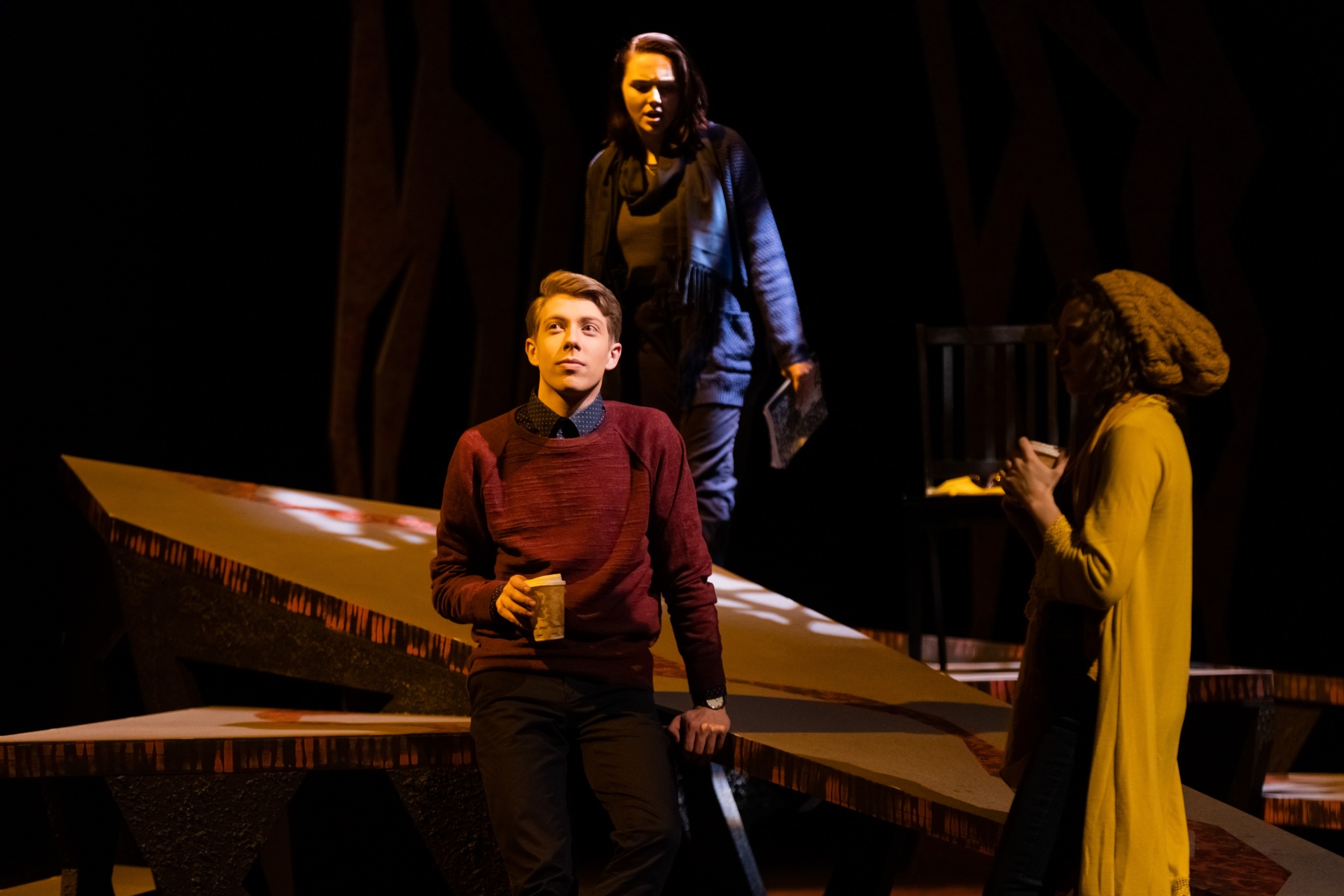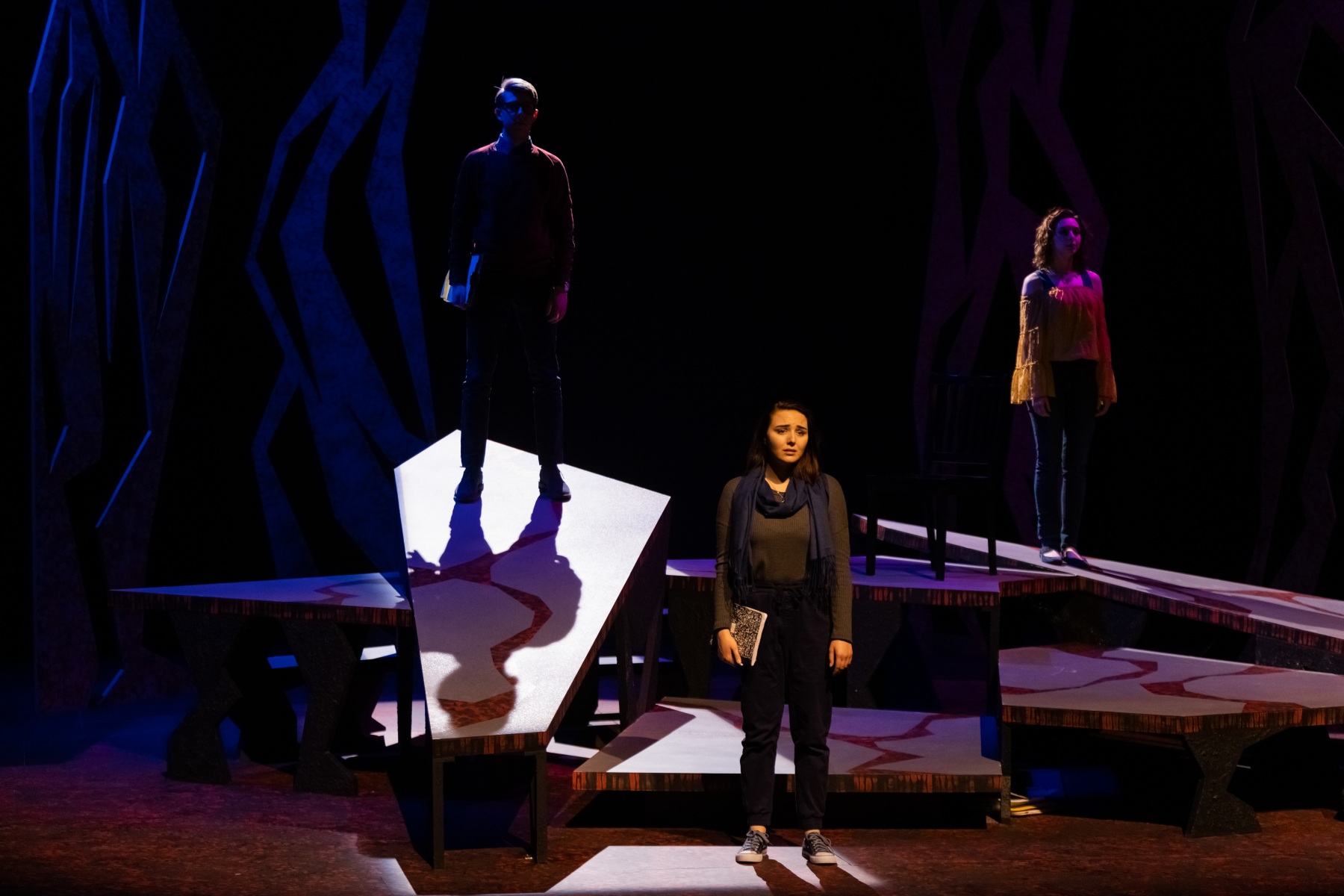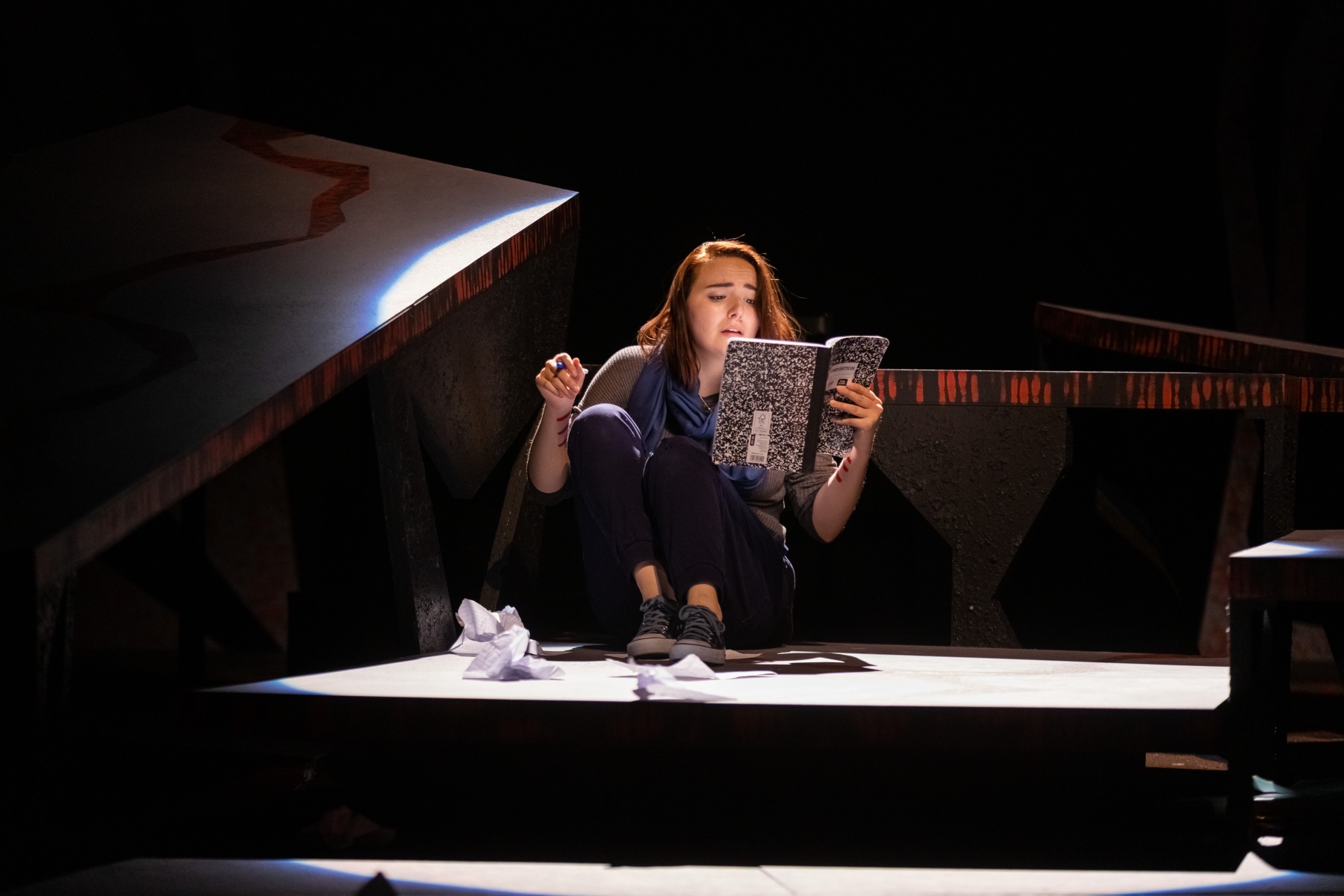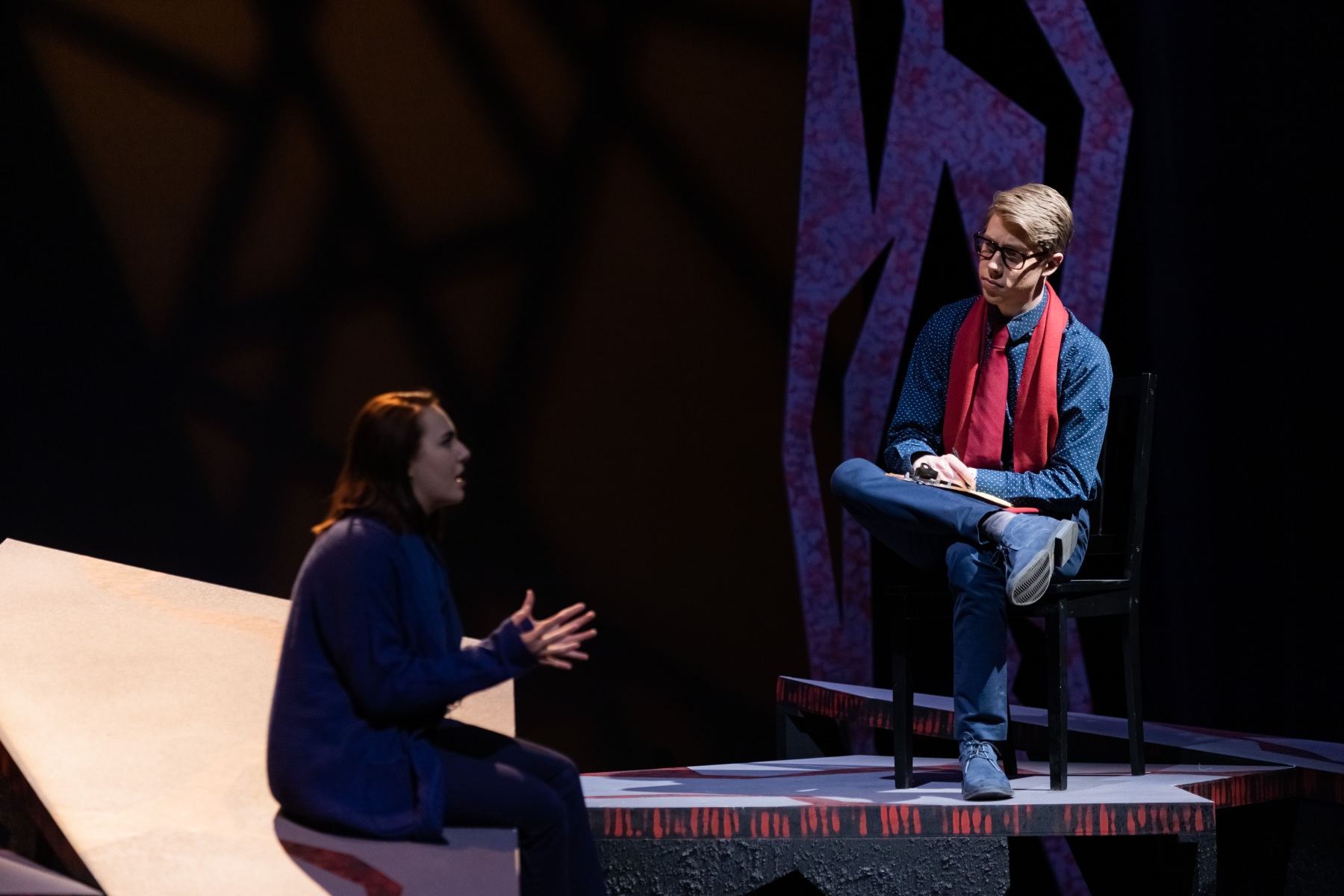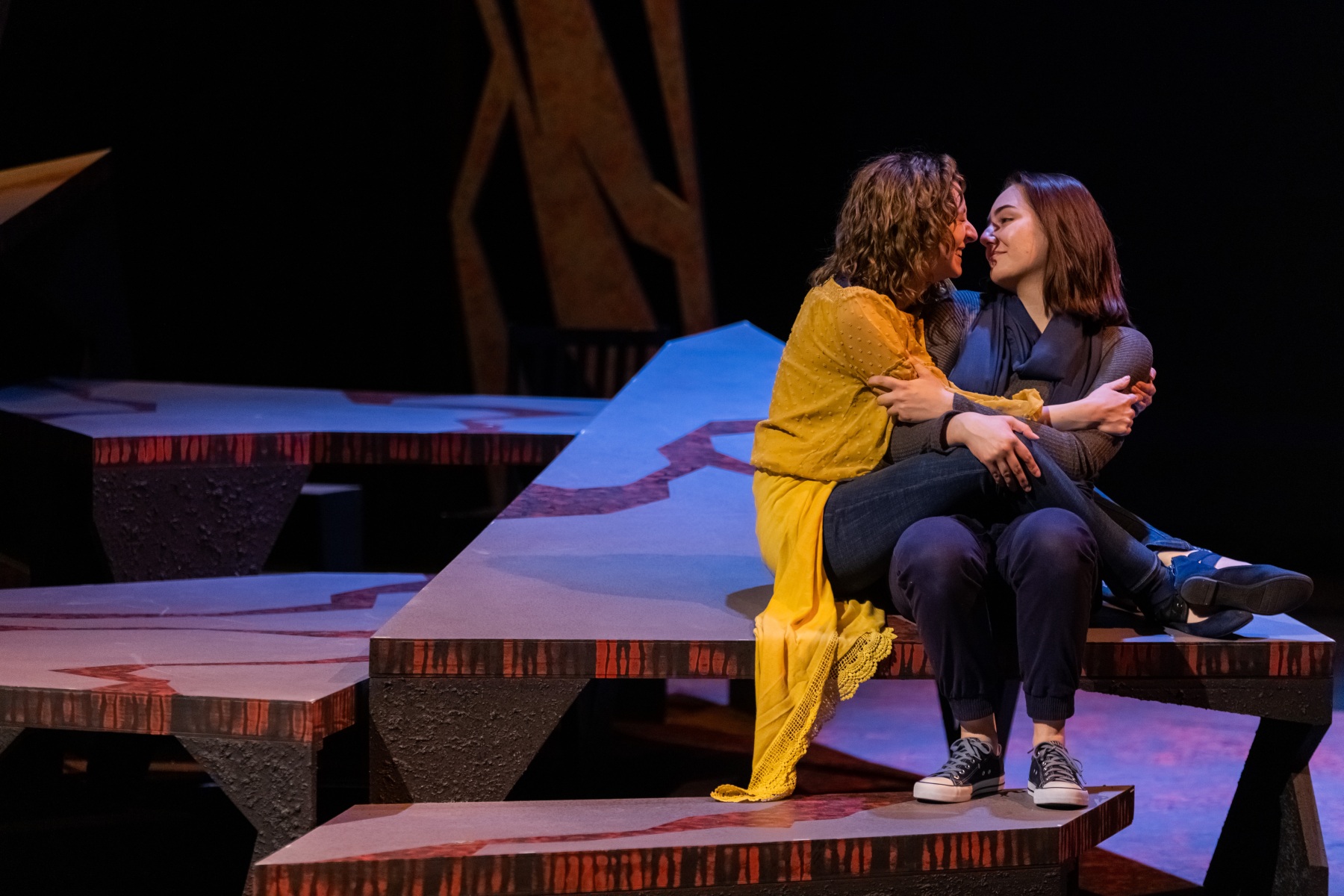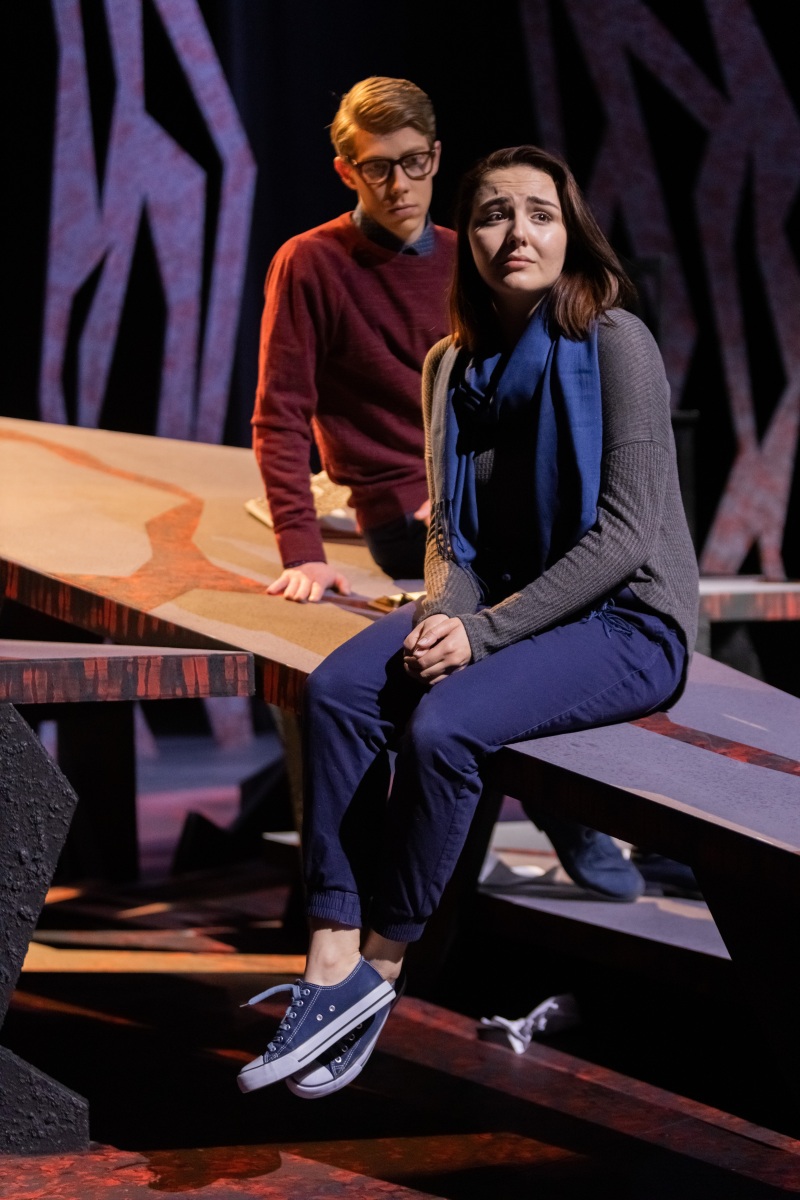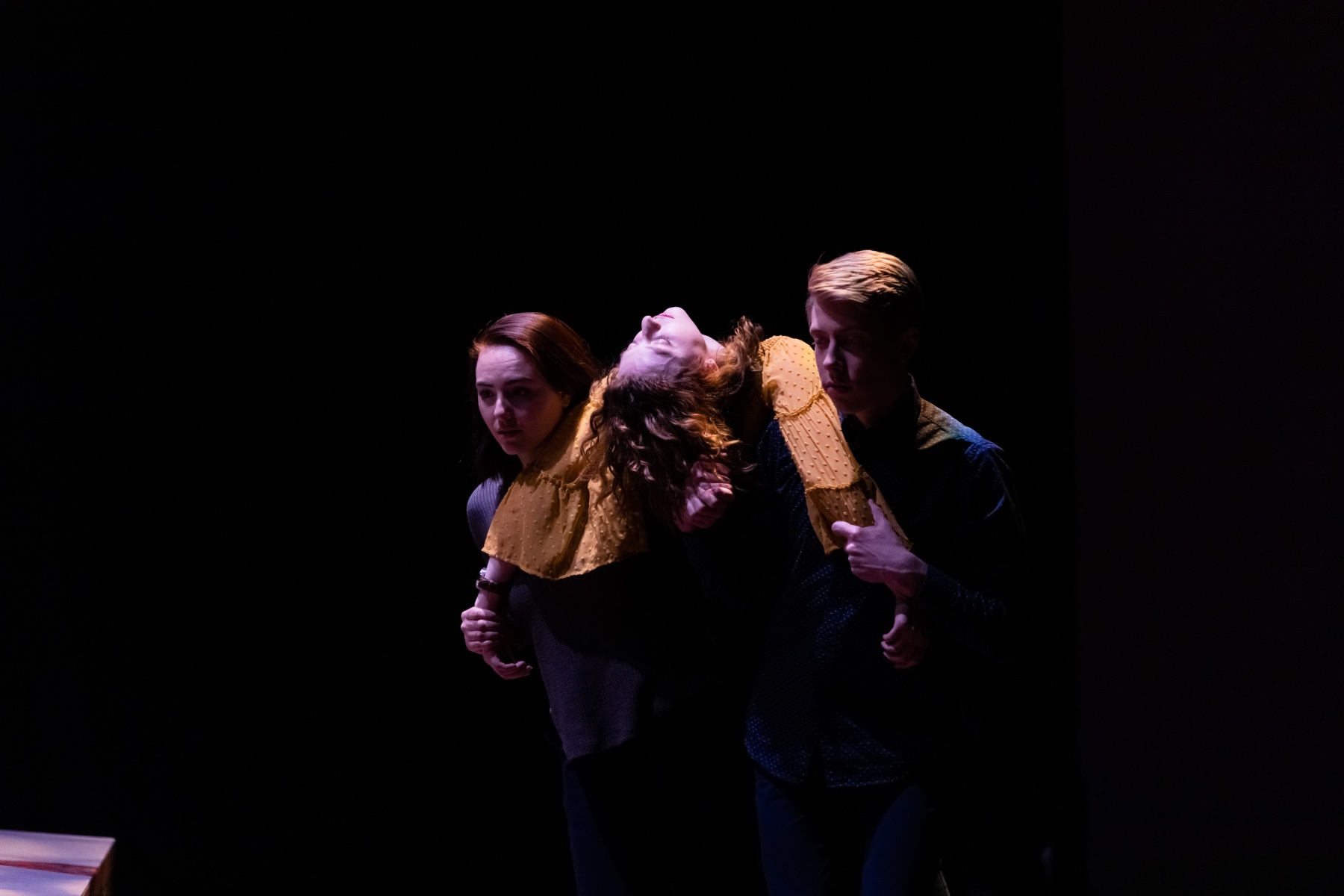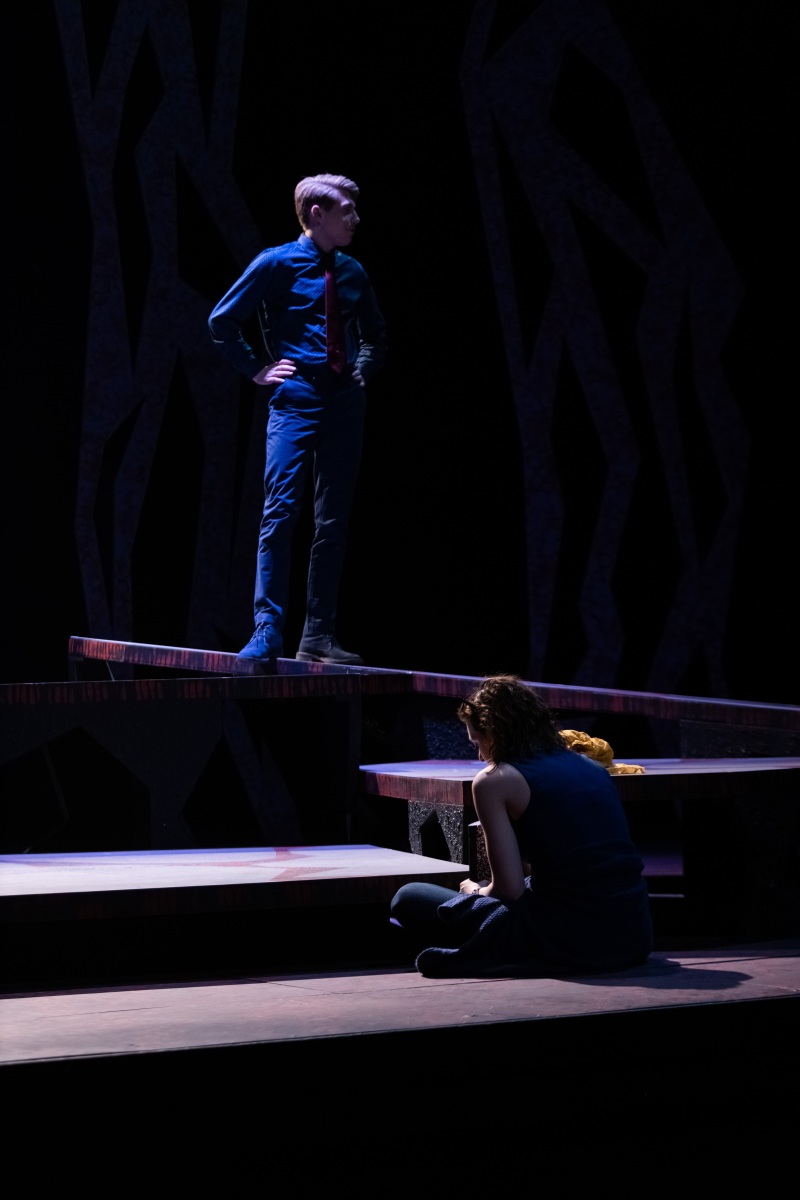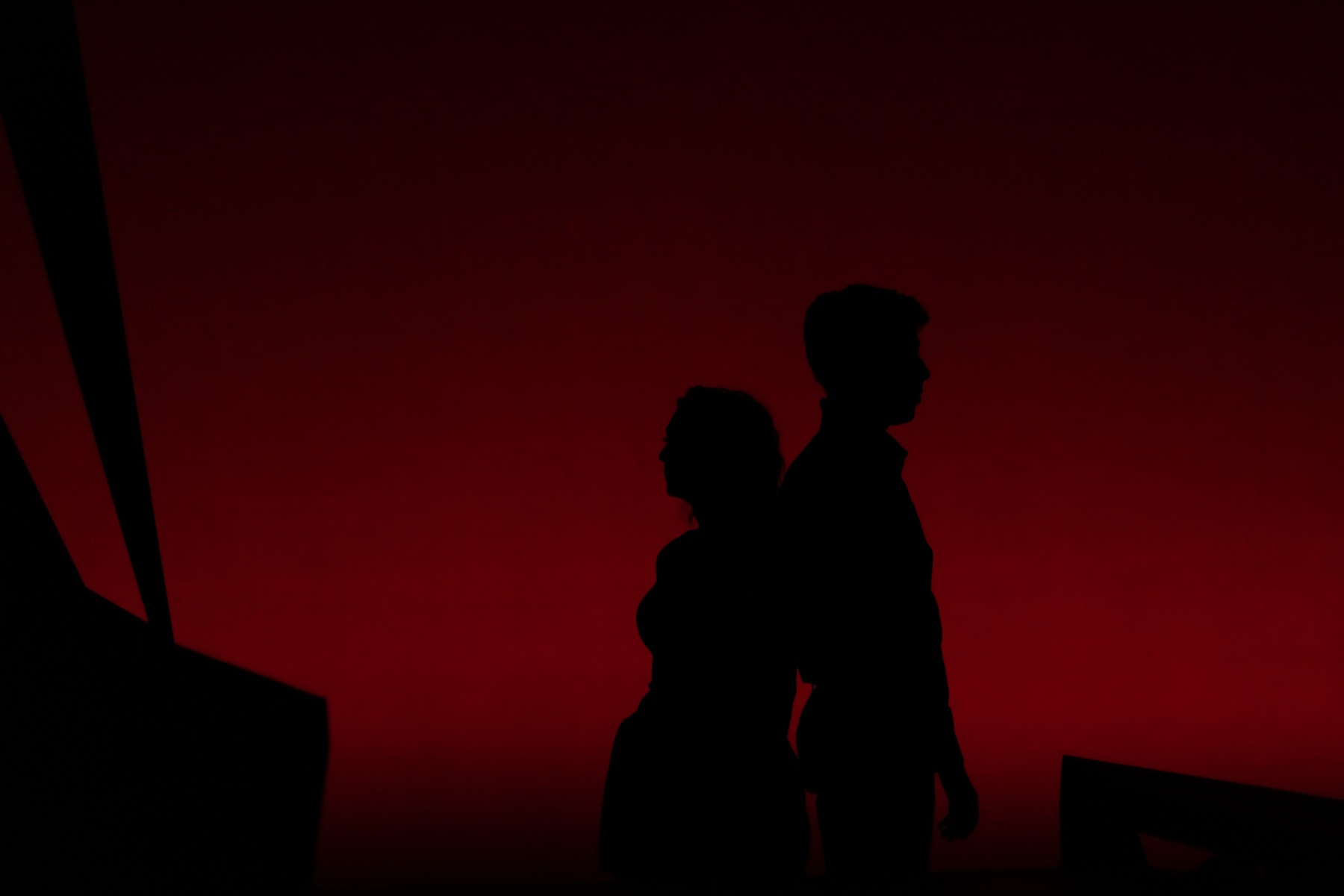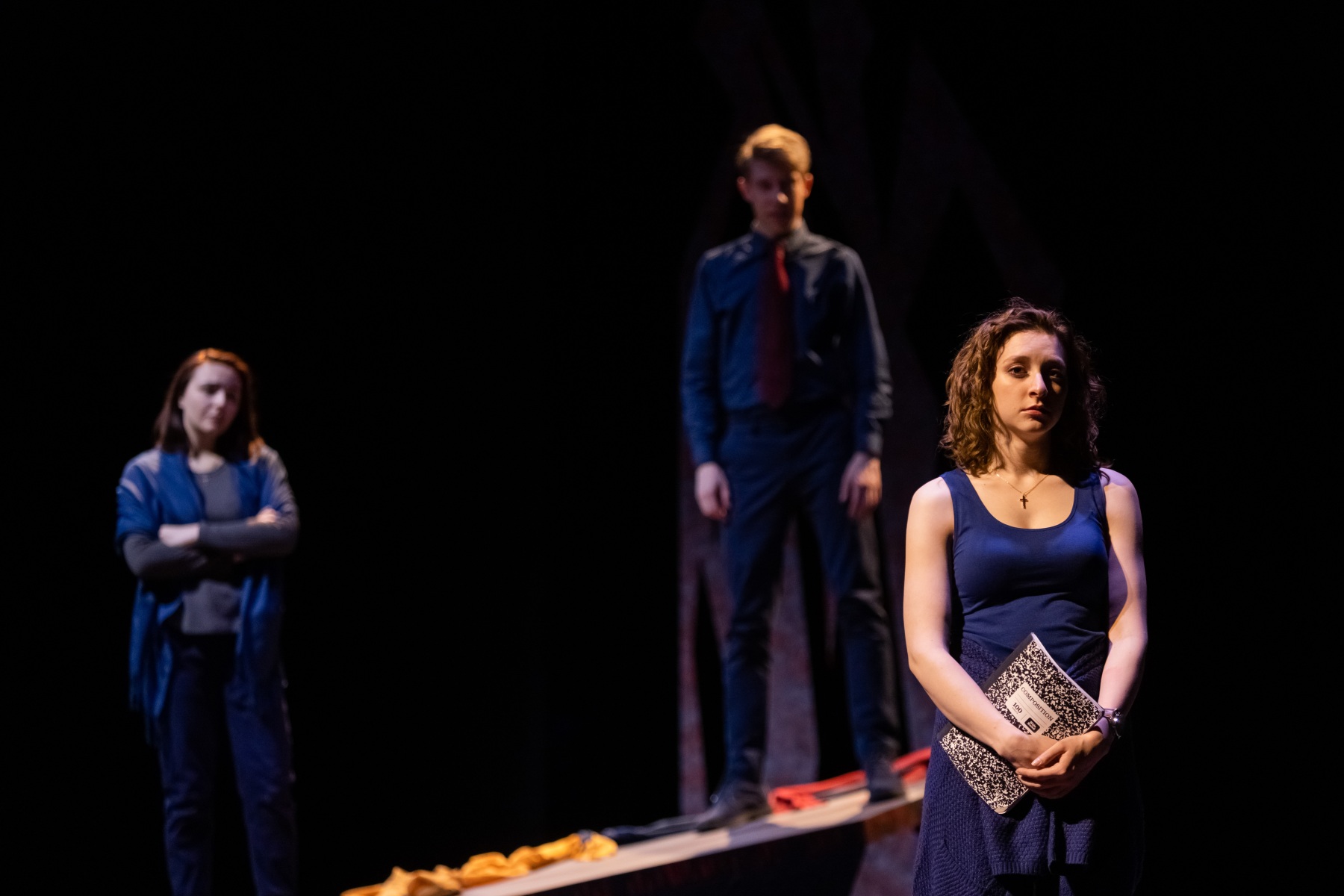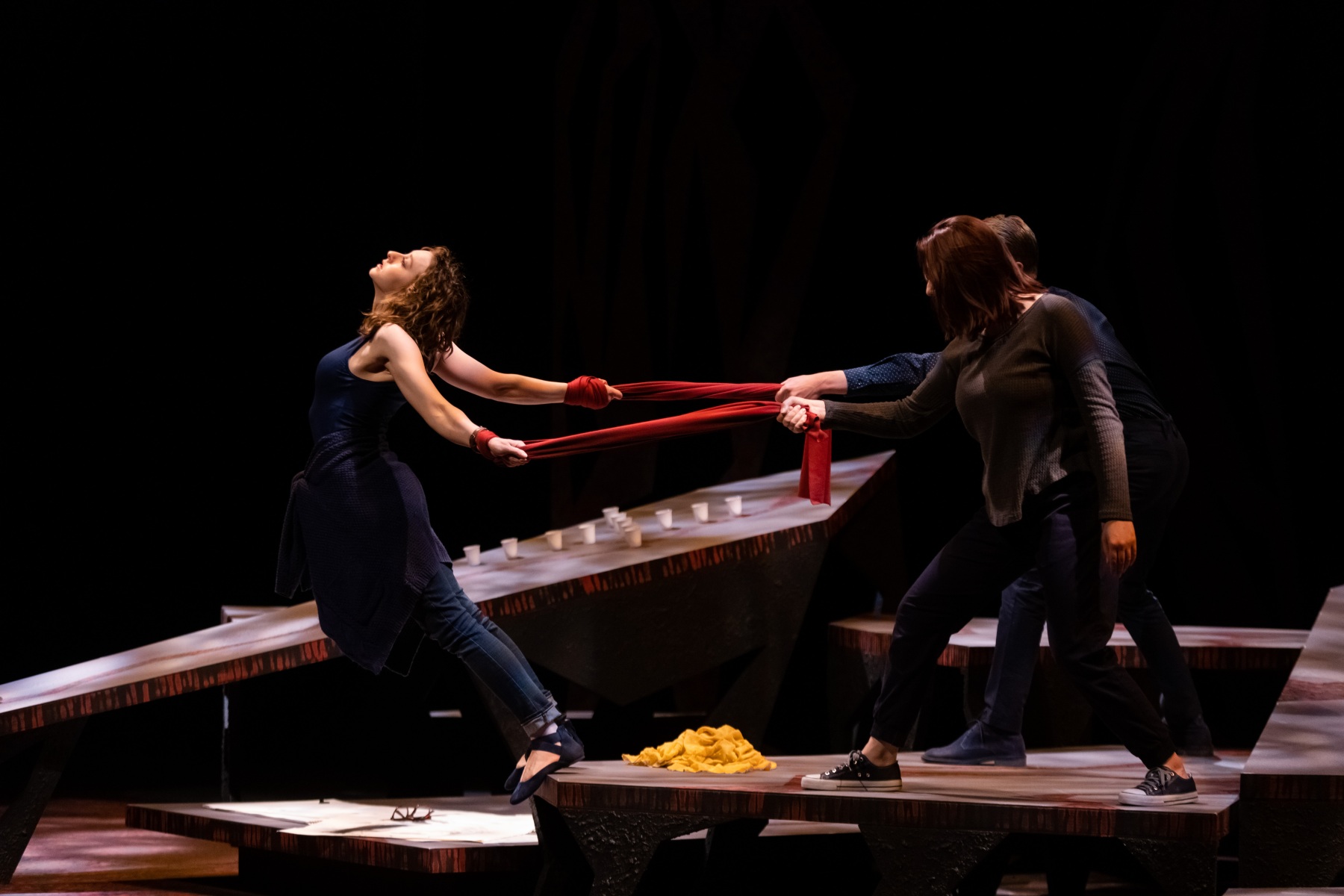| Artistic Staff | Cast |
| Director: Scott C. Knowles | Woman 1: Olivia Sham |
Assistant Director: Bailey Rodriguez | Woman 2: Dani Brady |
Scenic Design: Brian Jude Beacom | Man 1: Matthew Bowden |
Assistant Scenic Designer: Melanie Rust | |
| Costume Design: Tanah Hislop | |
Lighting Design: Amelia Ludt | |
Sound Design: Jordan McWhorter | |
Dramaturg: April Buys | |
Stage Manager: Susannah Pilkington | |
| Movement Director: Whitney Black |
Vision Statement
For this project I partnered with Dr. Thalia Goldstein to explore the emotional impact of different genres of theatre. We produced two online versions of this production to compare: a realistic and postdramatic production.
Realistic Production
Sarah Kane’s final play, 4.48 Psychosis, has been called a dramatic suicide note. Kane herself, according to her longtime director James MacDonald, suggested her goal was “to write an experiential picture of what depression is like […] to allow them to experience that.” Our production will focus on experiencing the imaginary circumstances of depression written by Kane as if we ourselves were living them. So many of us have lost someone close to us, explored the possibilities of suicide ourselves, and continually fight the battle written in Kane’s play. The production is then an act of speaking authentically about suicidal ideation, depression, anxiety and showing that experience for all those that struggle and to all those that don’t understand. We will focus on clarity and specificity of character in time and place by expounding on what is left unclear and unsaid in the script. Structurally we will refocus the scenes into a clear dramatic structure and lines will be assigned and labeled for specific characters. Within the play there are three characters: 1) the I that is the subject of the piece, a depressed young woman who will eventually die by suicide. 2) the Friend, who is sometimes a lover, sometimes a sibling, sometimes just a friend that represents the people of I’s life. And 3) the Doctor, who interacts with I and struggles to help her as she seeks to save herself. The scenes consist of specific moments of I’s trajectory through her treatment for depression and suicidal ideation, culminating in the final moment of the play where I vanishes. This allows the play to become a series of vignettes that represent a “slice of life” theatre experience based in the reality of one young woman’s life and death. Our goal to realistically portray this young woman will result in an opening up about depression and suicide within our community and a chance to empathize and understand the struggles of our peers, our siblings, our parents, and our children.
Postdramatic Production
A central function of Sarah Kane’s 4.48 Psychosis can be found in the definition of metaphor offered in the line: “the defining feature of a metaphor is that it’s real” (211). The text questions this notion by repeatedly requesting “factual” verification, which is answered in silence. Metaphors are not real in the sense of facts or reality, but rather expand and illuminate the true nature or understanding of a thing through a variety of techniques. Specifically, 4.48 Psychosis operates in the realm of open-ended metaphors that have no clear interpretive stopping point, no sign made up of signified and signifier, no clear meaning. In this play, depression and suicidal ideation are individual and multitudinous. Expressed in a hundred different short moments through bodies in space. Our objective is to present multiple experiences of depression through dance, imagery, and a variety of open-ended metaphors that require an audience directly participate in the making of meaning and perhaps the experience of depression itself. This is a world in which no one’s experience is assumed, and the assumptions of the medical establishment are directly refuted. Theatricality will be heightened through the actor’s use of space, moments will be created in collaboration with actors and director, no semblance of a linear text will be attempted or desired, a premium will be placed on the creation of an impactful image, moment, sequence, or exchange. A dynamic bricolage will emerge building to a frenetic pace, with the goal of immersing an audience in an environment that communicates through the sensorium and not careful observation. This production will result in an experience meant to create empathy and understanding between people that struggle with and struggle to understand suicidal ideation and depression.ber 2014): 564.
Short scenes from this production can be viewed here: Directing Video
Contact me for password.
